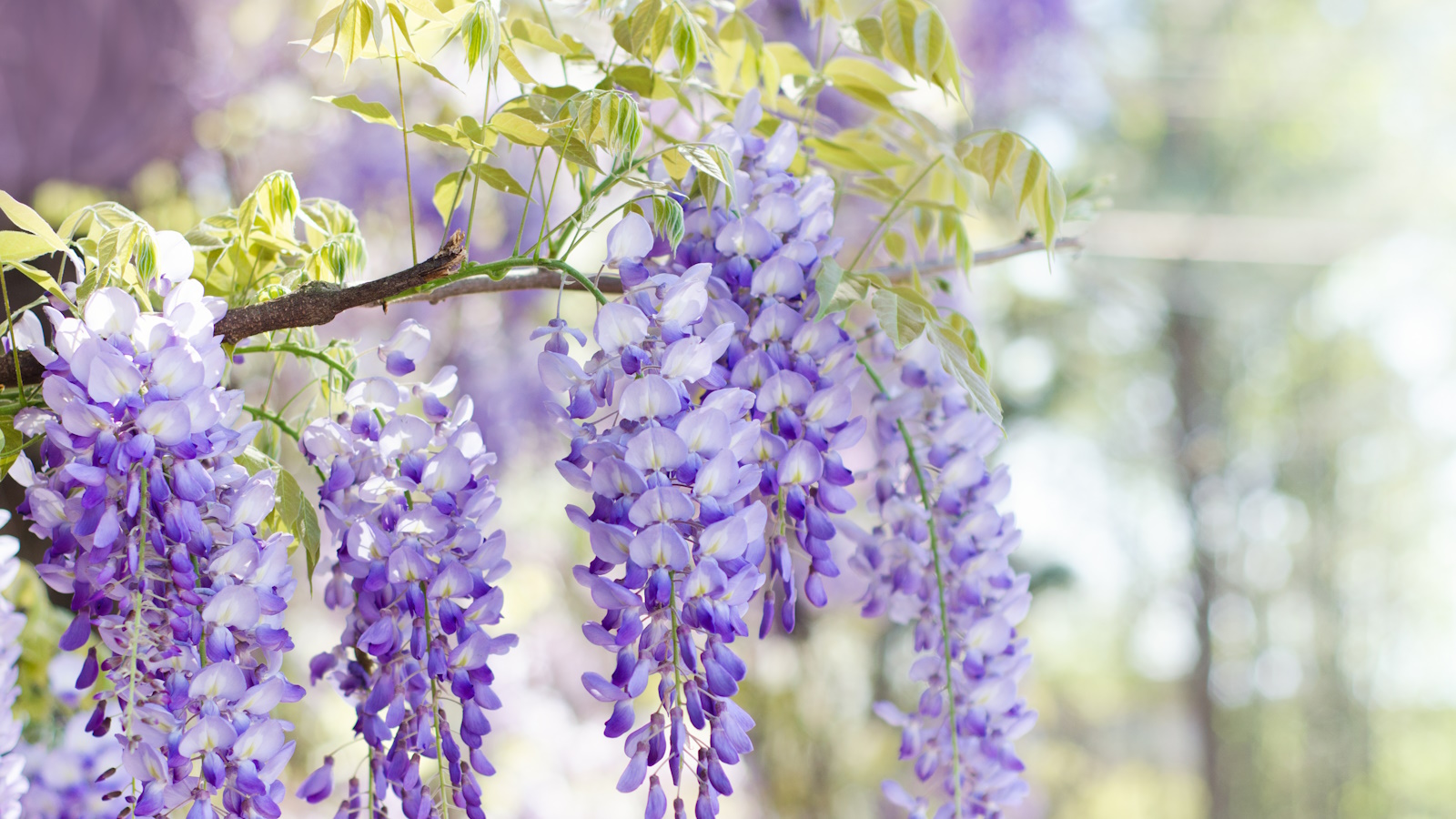
Fragrant flowers add an extra dimension to any backyard, making your outdoor space a feast for all the senses. Scent is one of the most savored and sought-after qualities in a garden plant, and many scented florals are also fantastic for cutting, allowing you to fill your home with their beautiful perfume, too.
Including fragrant flowers in your flower bed ideas will enhance your enjoyment of your garden. Aroma often draws you to a plant before you can even see it, and engaging with fragrant flowers and foliage is a key part of a sensory garden experience.
I very often choose flowers for their scent, and have been growing some of the varieties featured below for many years. With the right choice of plants, there’s no reason your outdoor space can’t be filled with wonderful, sweet smelling blooms all year round. Here, we take a look at a selection of the very best fragrant flowers you can grow.
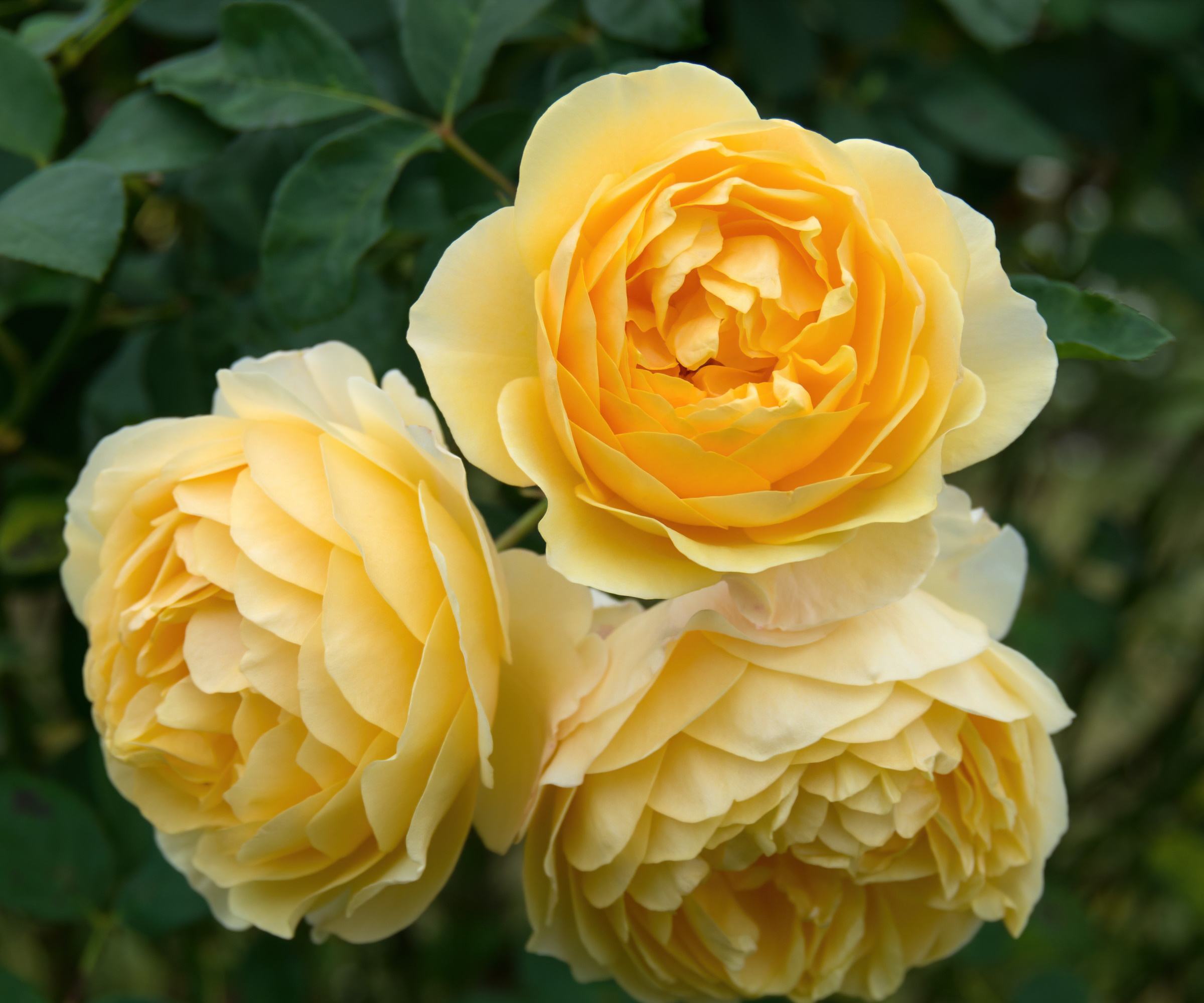
14 of the best fragrant flowers
To get the most out of your fragrant flowers, consider planting them around seating areas, paths and doorways where you can enjoy their scent to the full.
When choosing fragrant flowers to plant, it’s also worth thinking about when you spend the most time in the garden. Some flowers, such as if you're growing jasmine and nicotiana, intensify in fragrance in the evenings, so these work particularly well as a plant to make your patio smell nice, or in other spots where you might sit on a summer’s night. Whereas if you like to enjoy breakfast on a sunny terrace or courtyard, then fragrant roses scrambling up a nearby wall could fill the air with their aroma, and aromatic herbs can fill containers.
Include some of the best flowering shrubs, climbers, bulbs and annuals blooming throughout the seasons to fill your outdoor space with fragrant flowers all year round.
1. Mock orange – Philadelphus
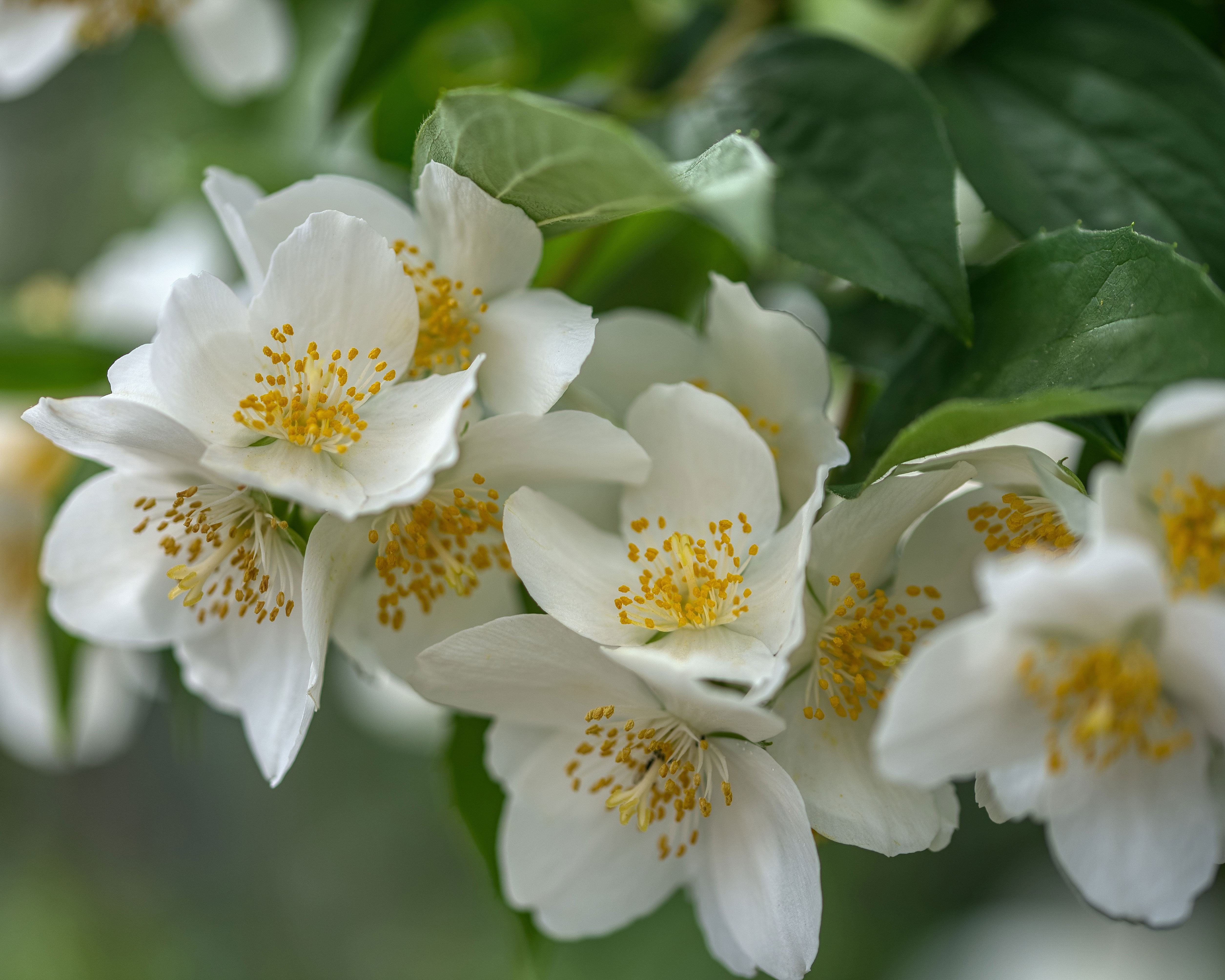
Known as mock orange for its gorgeous citrus blossom scent, this tall, deciduous shrub produces arching stems that become smothered in clusters of pure white flowers in late spring through early summer. The blooms of this fast growing shrub are often four-petalled with contrasting yellow stamens, though double varieties are also available.
Philadelphus coronarius ‘Aureus’ combines elegant single blooms with eye-catching golden-green foliage, and the fragrance really does have to be smelt to be believed, so is a top choice for fragrant flowers to plant.
'Visitors often inquire about the scent and Philadelphus coronarius ‘Aureus’ and any other mock oranges are powerfully perfumed when their flowers appear in late spring says Eric Hsu, plant information coordinator at Chanticleer Garden, Pennsylvania.
USDA zones: 4-8
Flowers: May-June
Plant: in full sun or part shade, in moist but free-draining soil
Prune: straight after flowering, prune back all flowering stems to one third of their length to prevent the shrub from becoming leggy.
With densely held foliage on arching branches, these rounded and highly fragrant shrubs can grow into a magical flowering screen.
2. Roses
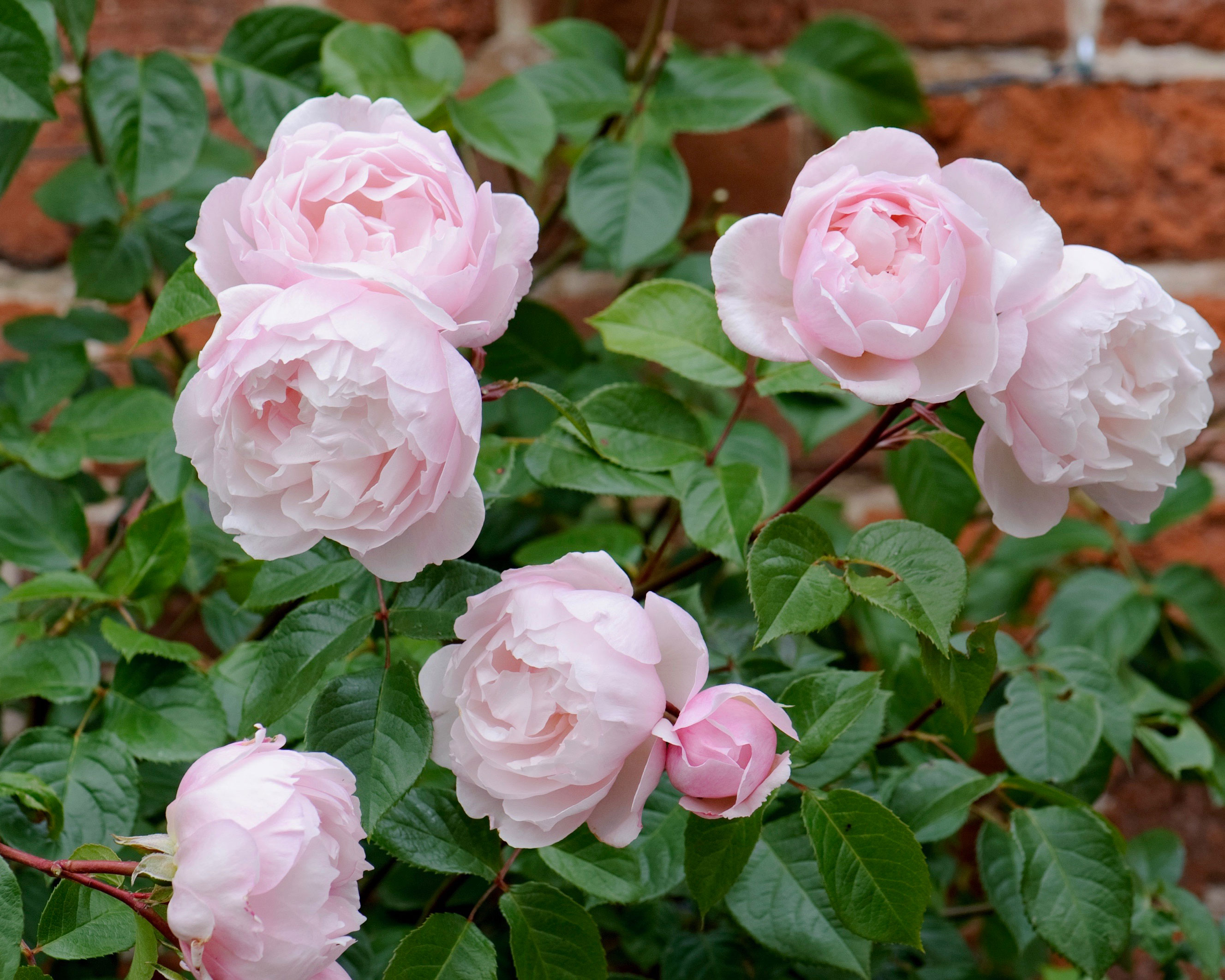
No scented garden is complete without a rose. Some of the most fragrant flowers to plant are David Austin’s famous English roses, which have been bred to combine the best traits of modern rose varieties – including color range and repeat flowering – with the wonderful fragrances of old varieties.
There are many rose garden ideas for ways they can be incorporated into your yard. All David Austin roses are fragrant, but there are five different fragrance profiles: Myrrh, Tea, Fruity, Musk and Old Rose. One of the top varieties for scent, is ‘The Generous Gardener’, a rambling rose whose fragrance is a combination of Musk, Old Rose and Myrrh. Also highly fragrant are the climbing rose ‘Bathsheba’ for Myrrh, and ‘Desdemona’ for Old Rose, ‘Vanessa Bell’ for Tea, and ‘The Poet’s Wife’ for Fruity – all shrub varieties.
David Austin roses can be grown in a wide range of climatic zones, thriving in USDA zones 4-11. In truly hot zones, plant roses where they get morning sun and protection from afternoon sun. To extend winter hardiness, choose an own root rose – a rose grown from a cutting, rather than grafted onto a rootstock – and always plant deep so that the crown is at least 2 inches below the surface of the soil.
USDA zones: 4-11
Flowers: May-November depending on variety
Plant: in full sun for best flowering, but a minimum of 4-6 hours direct sun per day, in fertile, humus-rich but well-drained soil
Prune: Some varieties need to be pruned in winter, and others straight after flowering. Learn how to prune roses for the best blooms year after year.
3. Sweet peas – Lathyrus odoratus
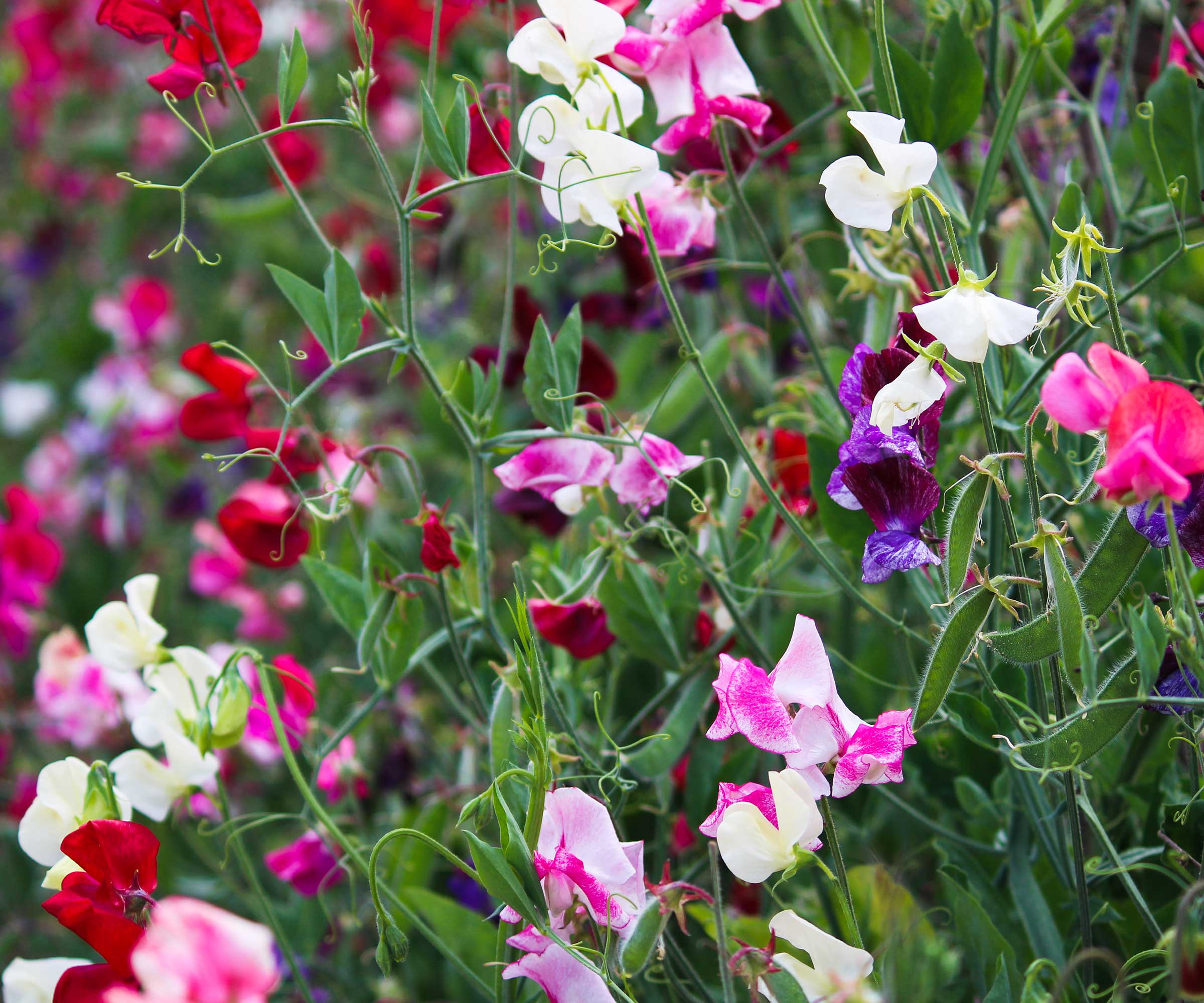
Most at home scrambling over obelisks and archways, sweet peas are a favorite among cottage garden plants, a hallmark of summer and a classic cut flower if you're planning a cut flower garden.
It is easy to learn how to grow sweet peas, and there are a huge number of varieties available of this popular annual climber, in myriad colors. Most are heavily scented, but perhaps the most fragrant flowers of all belong to ‘Matucana’, a historic heirloom variety boasting bicolored blooms in opulent shades of rich purple and velvety maroon.
The secret to abundant flowering is to keep picking your sweet peas, so you can enjoy luxurious bunches all around the house, where they will fill the room with their sweet scent.
USDA zones: 2-11 (thrive 3-8)
Flowers: June-August
Plant: in full sun in moist, fertile, humus-rich soil or in pots
Prune: pick flowers continually to encourage more blooms to be produced and remove any seedpods that develop.
Sweet peas are easy to grow from seed and can be easily grown to climb fences, trellises, screens, mailboxes, light posts, and banks.
4. Tobacco flower – Nicotiana
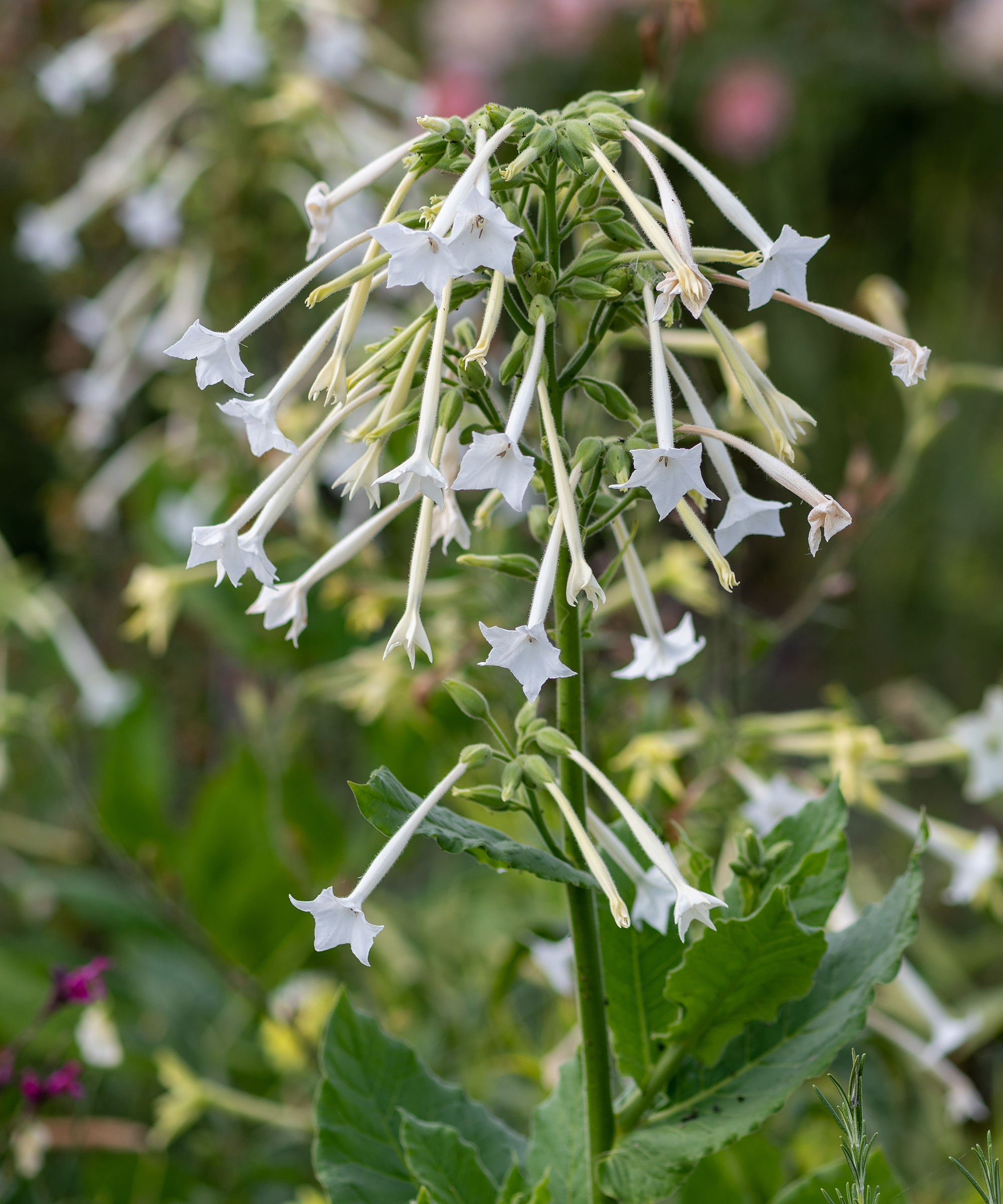
Flowers that release their scent in the evening are perfect for planting around patios, or as courtyard garden ideas for those who like to relax in the garden after getting home from work.
Nicotiana, or tobacco flowers, are great night-scented plants. Blooming from early summer right through to the first frosts, this popular bedding plant is perfect for filling gaps in borders and containers. They are usually grown as a half-hardy annual and are good for low maintenance border ideas and easy to grow. Although they look lovely all day, tobacco flowers really come into their own in the evening, when they release a heady fragrance to attract nocturnal pollinators.
Nicotiana alata is a great choice as its relatively small size means that pockets of it can be incorporated into pretty much any garden or container display. Nicotiana alata varieties come in a range of colors, from pure white to hot pink to vivid lime green. For something taller, try the equally fragrant Nicotiana sylvestris, which is ideal for woodland gardens.
USDA zones: grown as an annual in zones 6-9; may overwinter in zones 10-11
Flowers: June-October
Plant: in sun or part shade, in fertile, moist but well-drained soil
Prune: deadhead faded blooms to prolong flowering.
5. Lilacs – Syringa vulgaris
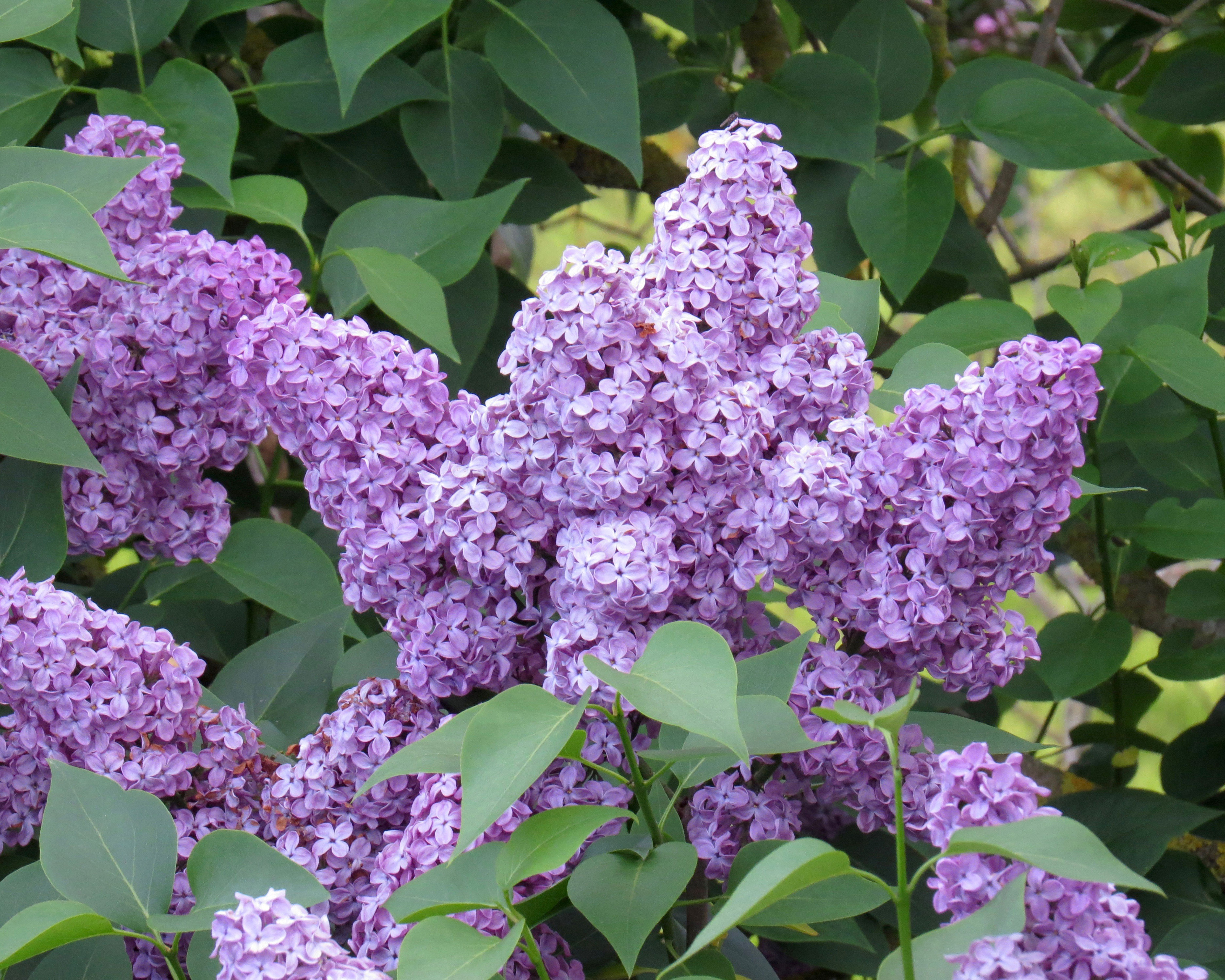
Lilacs are the top recommendation for fragrant flowers to plant of Jim Sutton, senior horticultural display designer at Longwood Gardens, Pennsylvania. 'For scent, the lilacs – Syringa species – always come to mind. We have a nice collection of them at Longwood and our guests greatly enjoy their recognizable scent when in bloom. It is such an iconic shrub for its fragrance and is very easy to grow,' he says.
Native to the rocky hills of the Balkans, central Europe, this deciduous shrub is very hardy and in fact requires a chilly winter to successfully bloom. Heart-shaped leaves emerge in spring, followed by dense clouds of tiny but powerfully scented flowers in shades of lilac, purple or white, depending on variety. Lilacs are also great for cutting, making an opulent display in a vase where you can enjoy their fragrance to the full. You can find stunning lilac 'sensation' shrubs available to buy at Nature Hills.
USDA zones: 3-7
Flowers: April-May
Plant: in full sun, in moist but free-draining, non-acidic soil
Prune: learn how to prune lilac to keep your plant looking its best. Prune after flowering, removing spent flowerheads. Remove any dead, damaged or diseased material, and tidy the shape as required.
6. Wisteria – Wisteria sinensis
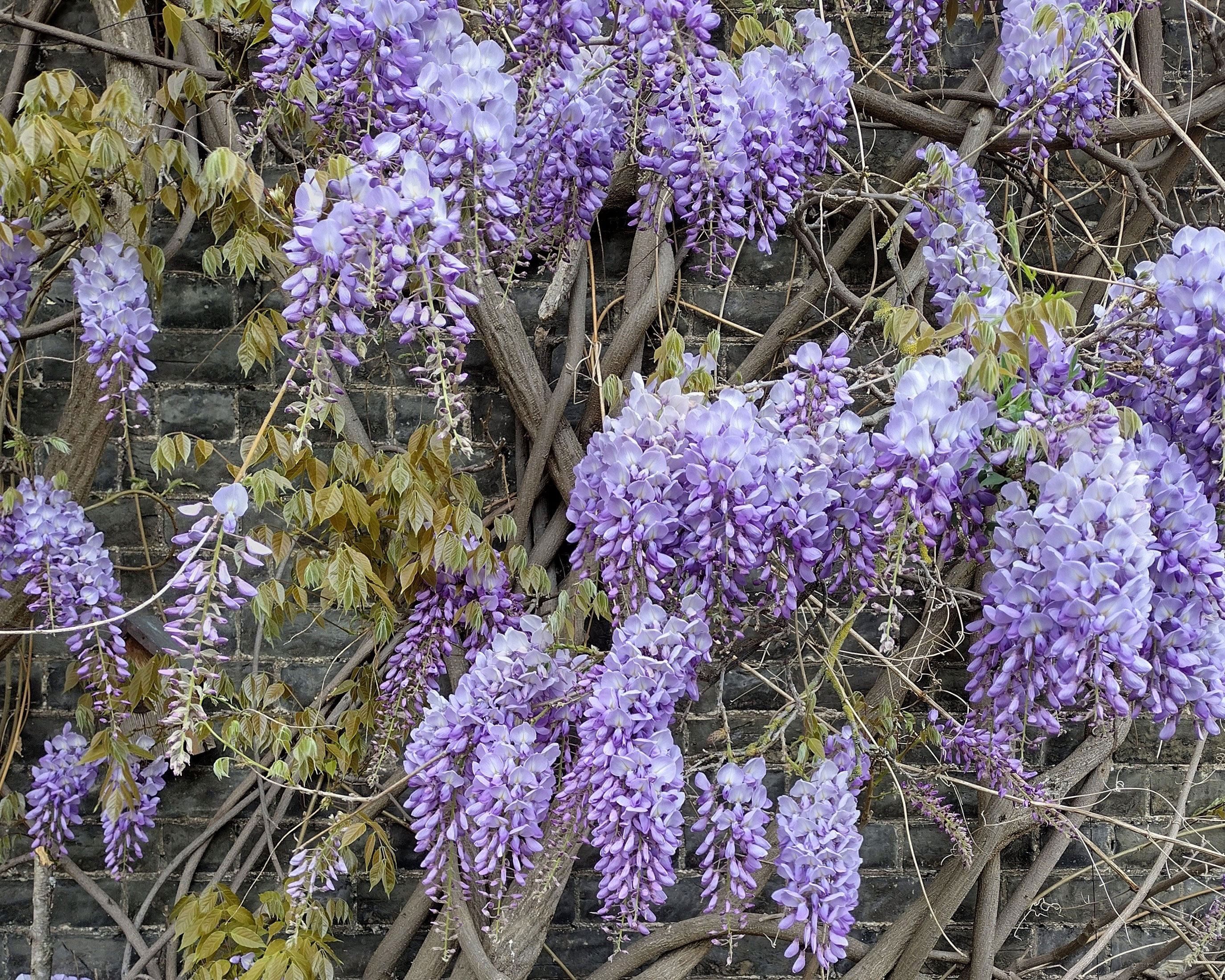
There are few garden features more spectacular than a mature flowering wisteria. In spring, this enduringly popular climber becomes festooned with long tresses of pale lilac flowers, which appear before the leaves to create a stunning display. The attractive lobed foliage, when it emerges, is a beautiful fresh bronze in color before maturing to green.
It's worth learning how to grow wisteria as they can take on magnificent structures, developing beautiful twisted woody trunks with age. Not only all this, but they have beautifully fragrant flowers, too. To appreciate their fragrance to the full, train a wisteria up the wall near your doorway, or over an arbor above a seating area.
USDA zones: 5-9
Flowers: April-May
Plant: in full sun in fertile, free-draining soil, next to a south- or west-facing wall, fence or arbor up which it can be trained.
Prune: It is important to know how to prune wisteria and when to prune wisteria to keep this climber under control. Prune according to the 2/7 rule: establish a main framework and prune side-shoots back to two buds in February (the 2nd month) and back to seven buds in July (the 7th month).
7. Dutch hyacinths – Hyacinthus orientalis
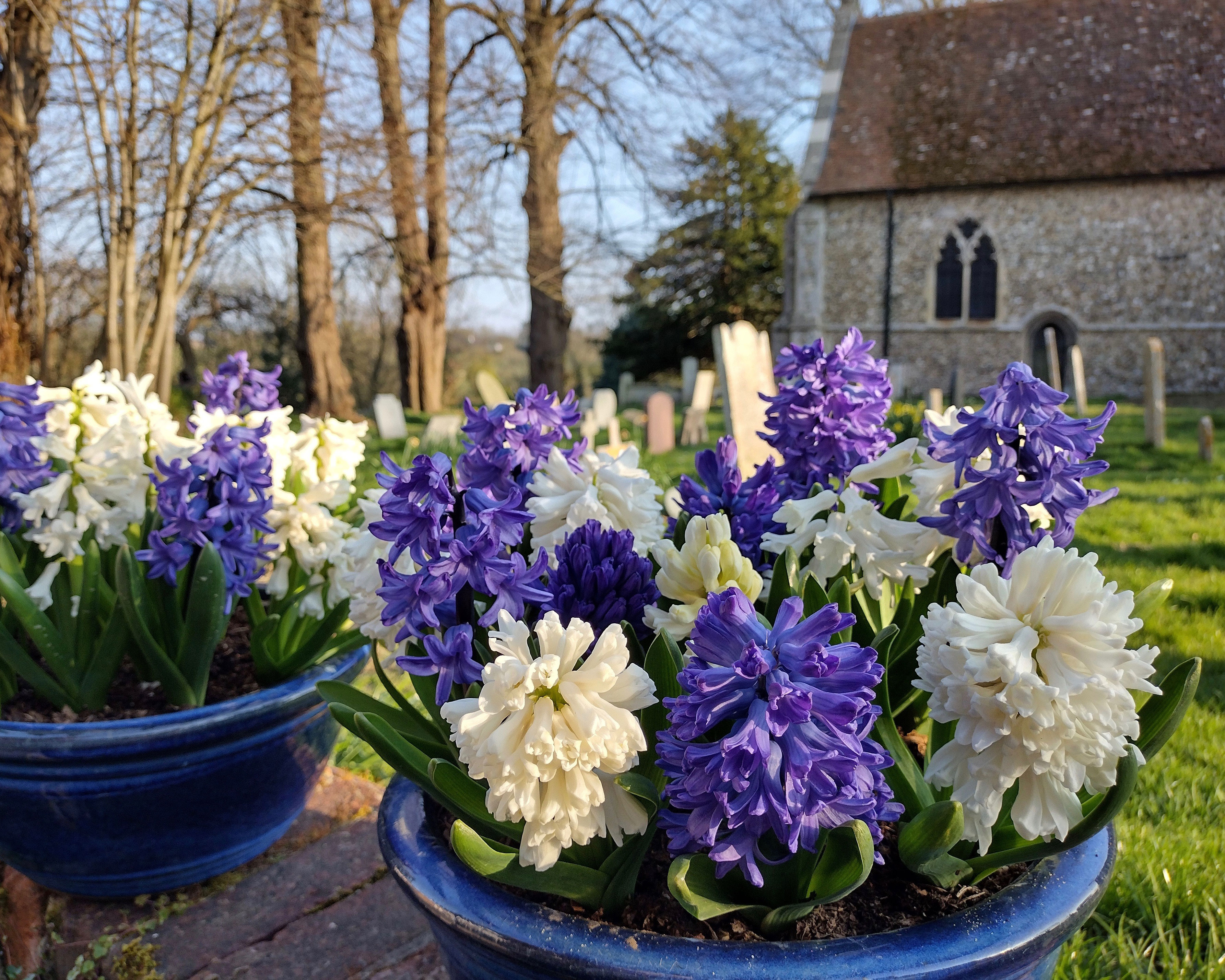
This is a fragrant flower that you can also grow in the house. Everyone has a place for Dutch hyacinths, whether for container gardening ideas, window boxes, dotted through borders or even in a bowl indoors. Their large, intensely fragrant flowerheads come in all shades of blue, pink, purple and white, and it's simple to learn how to grow hyacinth bulbs in containers.
'When planted en masse, the smell is unmistakable,' says Jim Sutton. 'It is also an easy spring bulb to plant in almost any garden.'
Although hyacinths naturally bloom in March and April, you can also buy ‘prepared’ bulbs which have been heat treated to flower earlier. These are ideal for indoor growing and when planted up in a decorative pot, the sprouting bulbs make a lovely Christmas gift. You can find mixed colour hyacinth bulbs available to buy at Walmart.
USDA zones: 4-8
Flowers: March-April
Plant: in full sun and free-draining soil in fall, or plant prepared bulbs in pots in September for Christmas flowering
Prune: remove faded flowerheads at the base but allow the foliage to remain for a few weeks to produce energy back into the bulb to feed next year’s flowers. Once it begins to die back it can be removed. Potted bulbs can then either be placed in a cool, dark place such as a shed or lifted and stored somewhere cool and dry.
8. Holly olive – Osmanthus heterophyllus
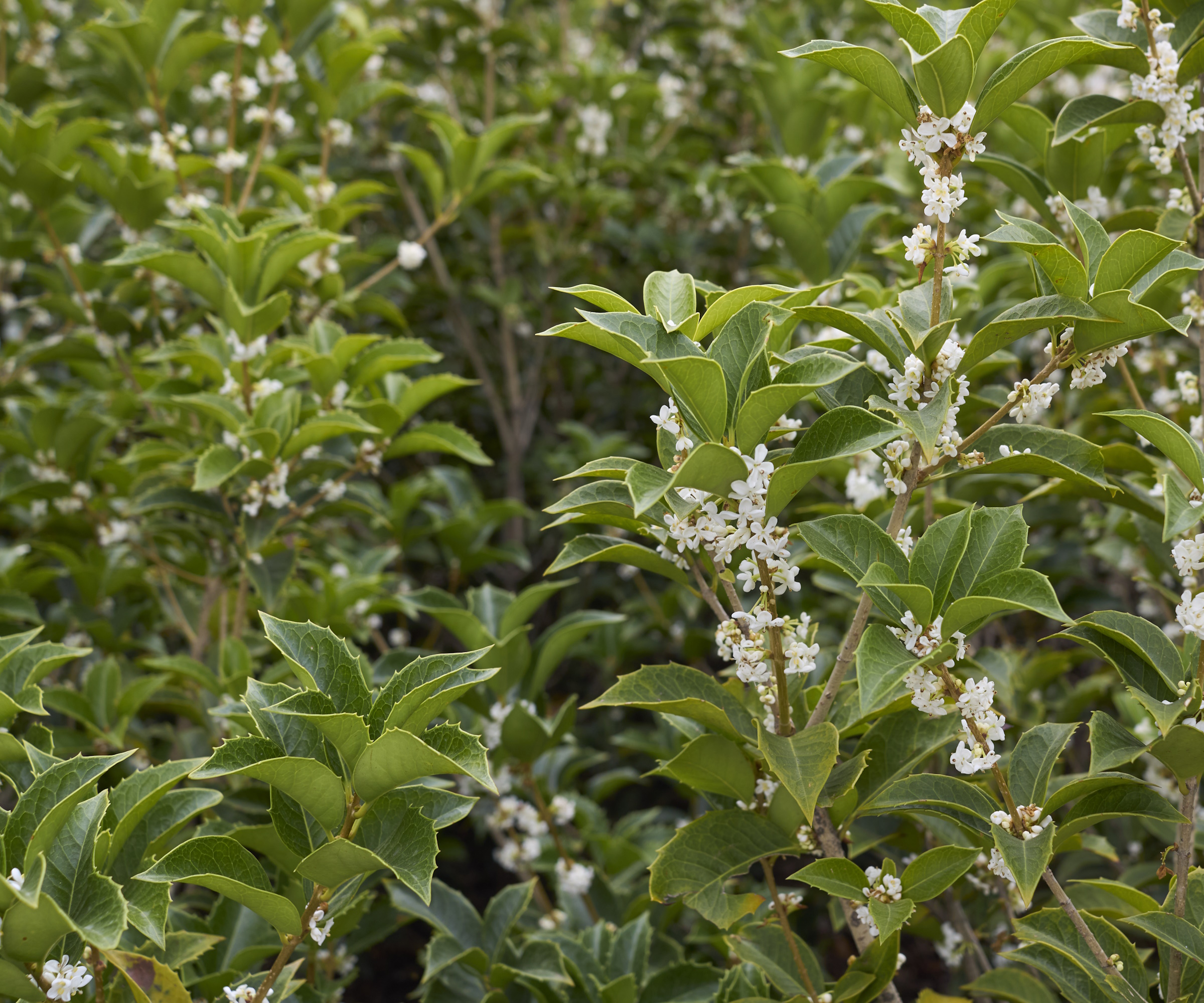
Fall can be a more challenging season to find fragrant flowers to plant in your garden. However, one must-have plant for scent in fall is the holly olive or Osmanthus heterophyllus, which are also deer resistant plants.
'Osmanthus fragrans and Osmanthus heterophyllus may not have showy flowers, but their delightful citrus, stone fruit, and floral aroma more than compensates. They are beautiful evergreen shrubs as well,' says Eric Hsu of Chanticleer Gardens.
Jim Sutton agrees. 'Osmanthus heterophyllus ‘Gulftide’ makes a nice hedge, although it has spiny leaf margins. It smells wonderful in the fall when it comes into bloom,' he says.
USDA zones: 6-9
Flowers: September-November
Plant: in sun or part shade, in fertile, moist but free-draining soil
Prune: little or none required; if desired, trim back long twigs to a pair of nodes to encourage a compact, bushy habit.
9. Winter box – Sarcococca confusa
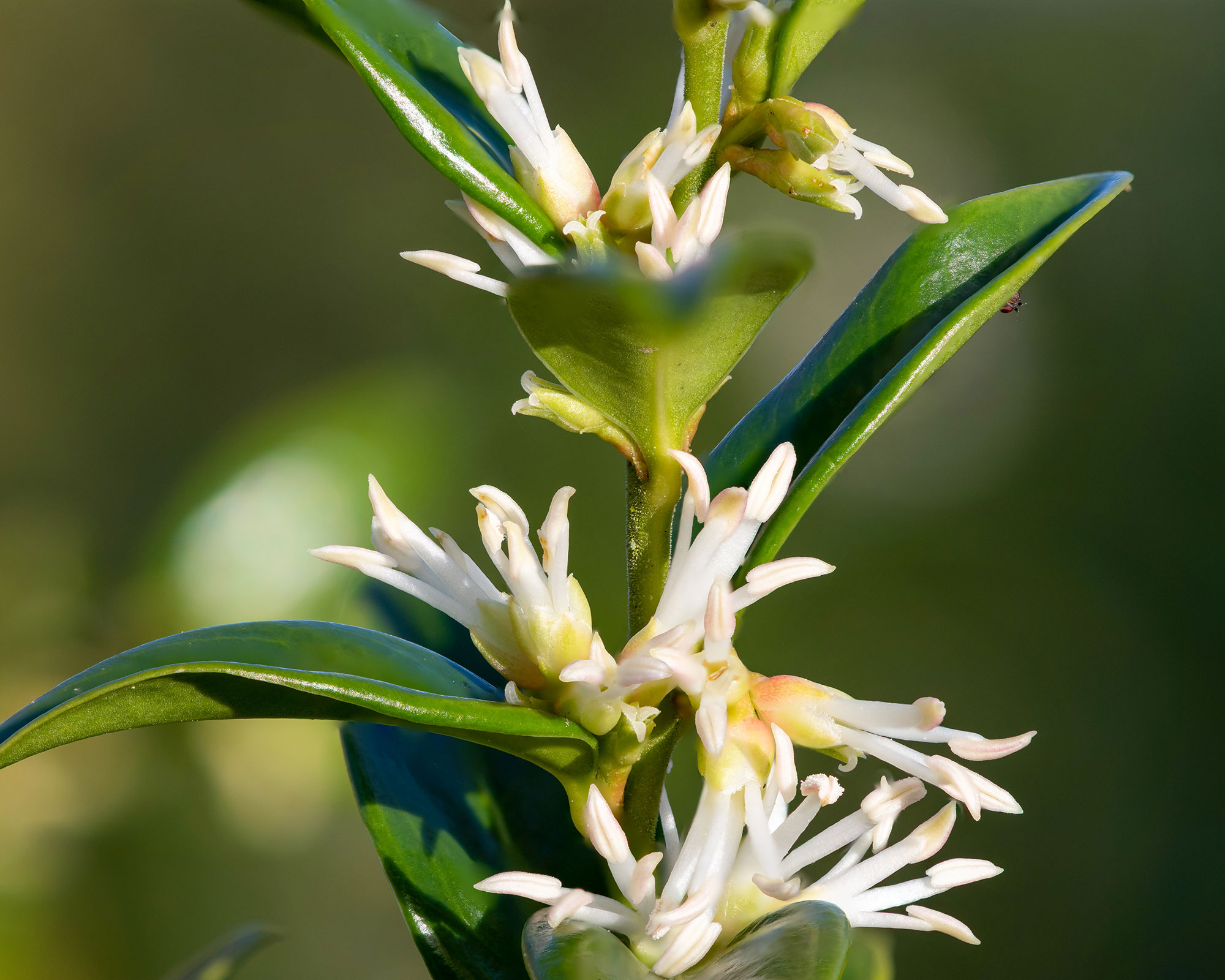
Coming into its own at a time when not much else is in flower, winter box is an essential for every garden or patio.
Highly versatile, the small evergreen is an ideal shrub for shade and works in pots, as informal privacy hedges or as punctuation points in borders to create year-round structure and interest.
Glossy, deep green spear-shaped leaves beautifully offset the delicate hanging clusters of tiny white fragrant flowers. Although small, the flowers are packed with an almost inconceivably powerful sweet scent, which will drift for yards on even the faintest breeze. The blooms are followed by shiny black berries. A compact and relatively slow-growing evergreen shrub, Sarcococca confusa is perfect for small gardens.
USDA zones: 7-9
Flowers: December-March
Plant: in shade or part shade, in humus-rich, moist but free-draining soil
Prune: none required, but the plant can be lightly trimmed after flowering to maintain the desired shape.
10. Daphne – Daphne bholua ‘Jaqueline Postill’
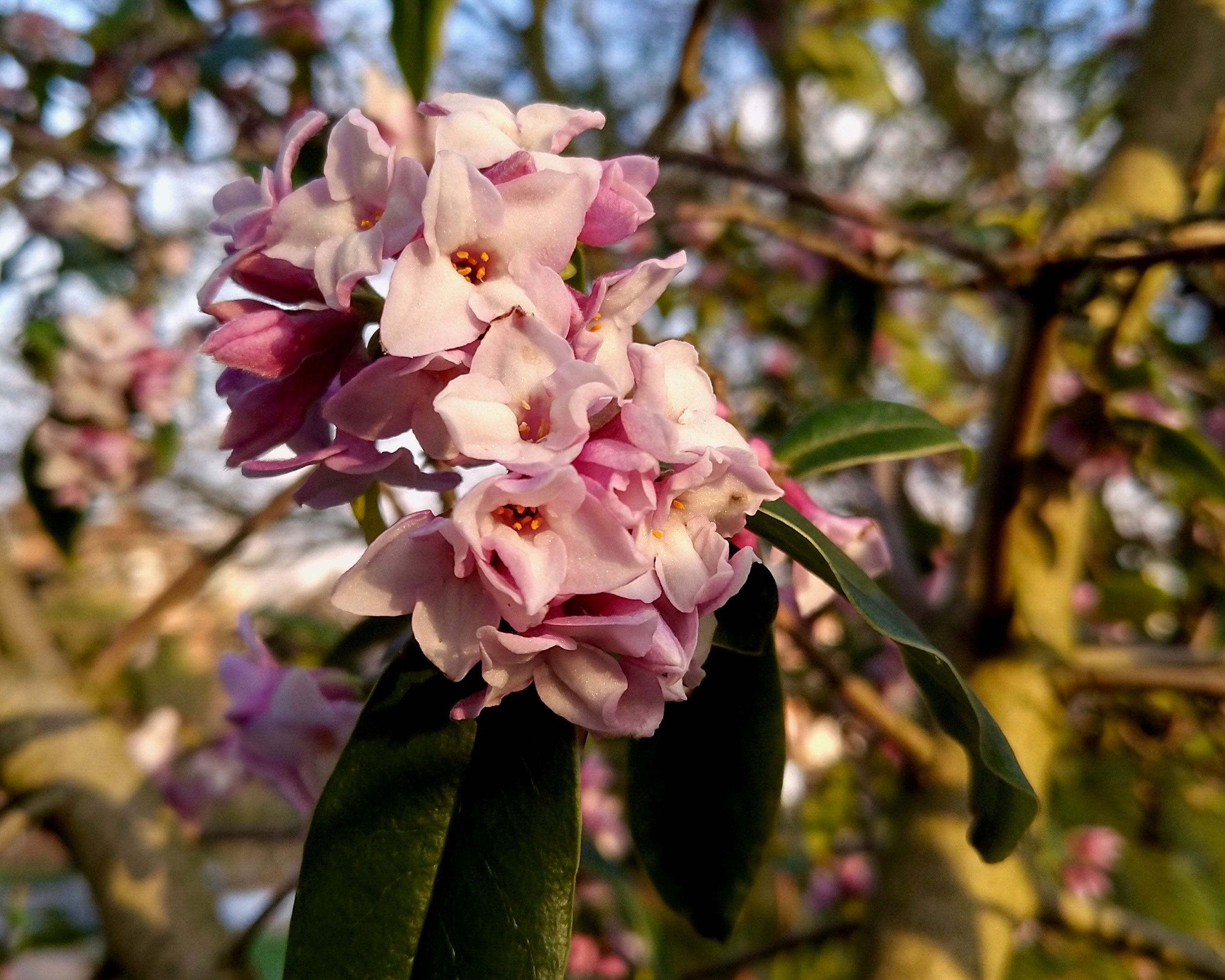
During the darkest months of winter, the divine fragrance of Daphne bholua ‘Jaqueline Postil’ cuts through the air, lifting the spirits on even the coldest, dullest days and drawing in all who smell it.
Among the best winter flowers, the waxy four-petalled flowers in palest pink of daphnes are held in tight clusters, each with a ruff of slender semi-evergreen leaves. The masses of intensely fragrant flowers are followed by round purple berries. Growing daphne makes a wonderful specimen shrub and is best planted near to a path or doorway where its scent can be enjoyed to the full.
USDA zones: 7-10
Flowers: January-February
Plant: in sun or part shade, in fertile, humus-rich but free-draining soil
Prune: none required – unless removing dead, damaged or diseased wood.
11. Star jasmine - Trachelospermum jasminoides
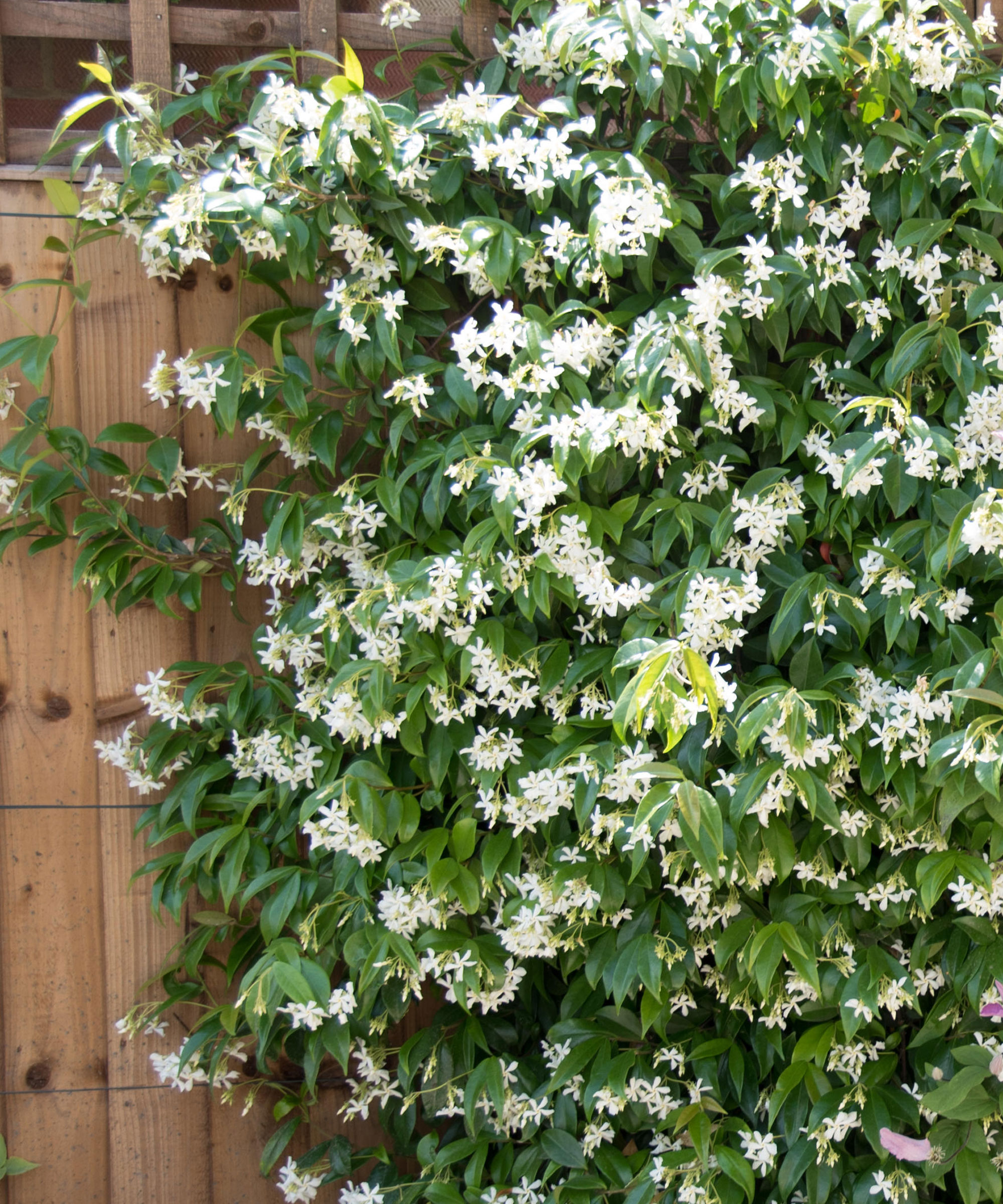
For outdoor growing, one of the most strongly scented climbers is star jasmine Trachelospermum jasminoides, especially in the evening.
This fast-growing flowering vine is a popular all-round choice as it’s scented and an evergreen climber. This makes star jasmine perfect for growing up a trellis to screen off a seating area.
Star jasmine isn't actually in the jasmine family, however, the highly fragrant and deciduous Jasminum officinale f. affine is also an amazing plant for fragrance. It’s quite happy to be container grown, so if you’re short of space, you can grow it on the patio scrambling up an obelisk.
USDA zones: 8-10
Flowers: May - September
Plant: In full sun or part shade
Prune: It is useful to know how to prune star jasmine to keep this climber under control.
12. Tuberose - Polianthes tuberosa
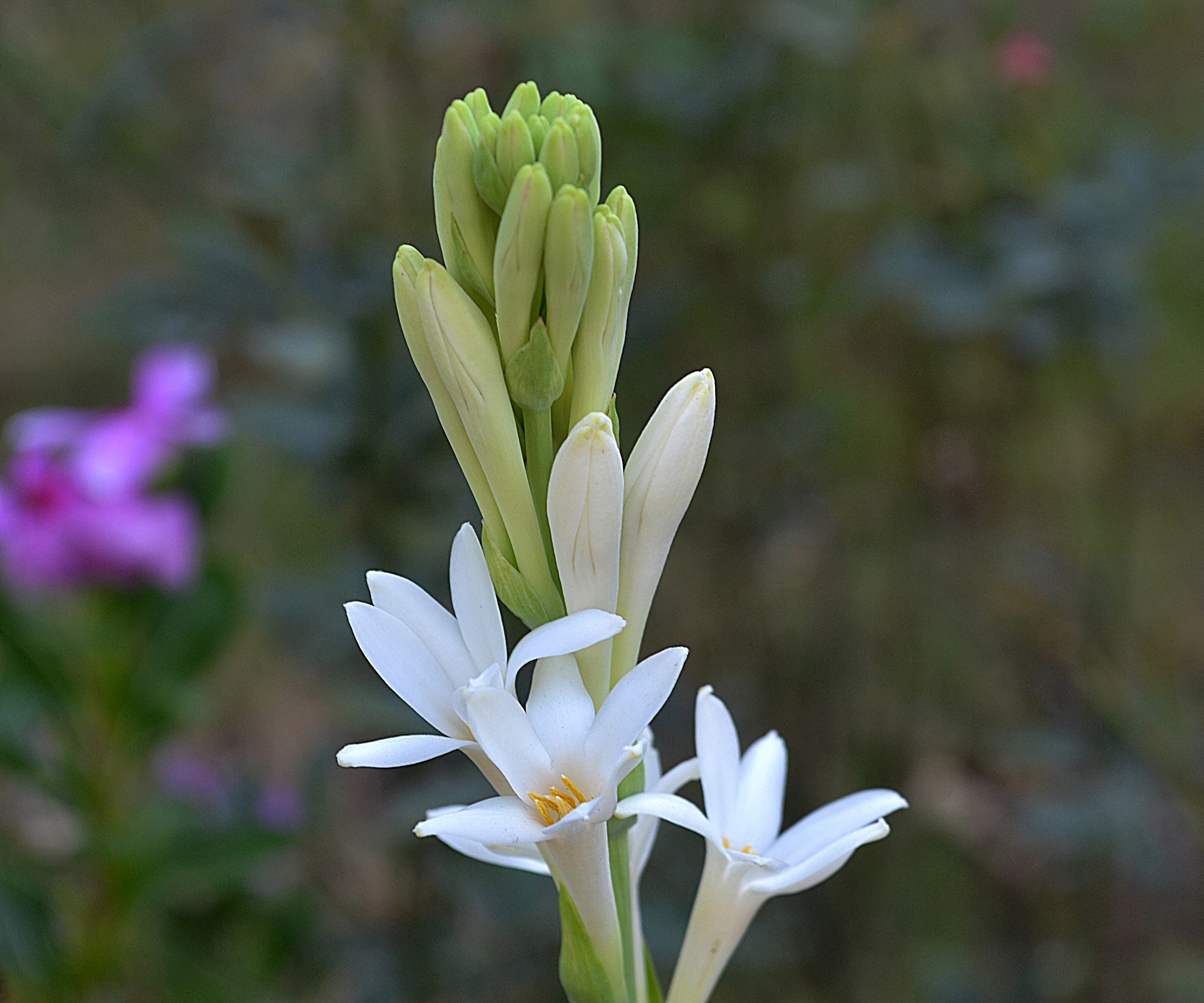
Tuberose, or Polianthes tuberosa, is a highly fragrant and tall flowering plant known for its beautiful white flowers - it's distinctive scent is often replicated in candles and home fragrances.
These plants are typically grown from bulbs or tubers. Choose healthy, firm tubers without any signs of damage or rot. They are usually planted in spring after the last frost date in your area, in well-drained, rich soil.
Tuberose plants may require staking or support once they start growing tall to prevent them from flopping over. You can use stakes or cages to support the stems if needed. They will also grow well in large containers to give your patio an elegant lift.
USDA zones: perennial in zones 7-11
Flowers: June - September
Plant: In full sun
Prune: After the foliage yellows.
13. Lavender - Lavandula angustifolia
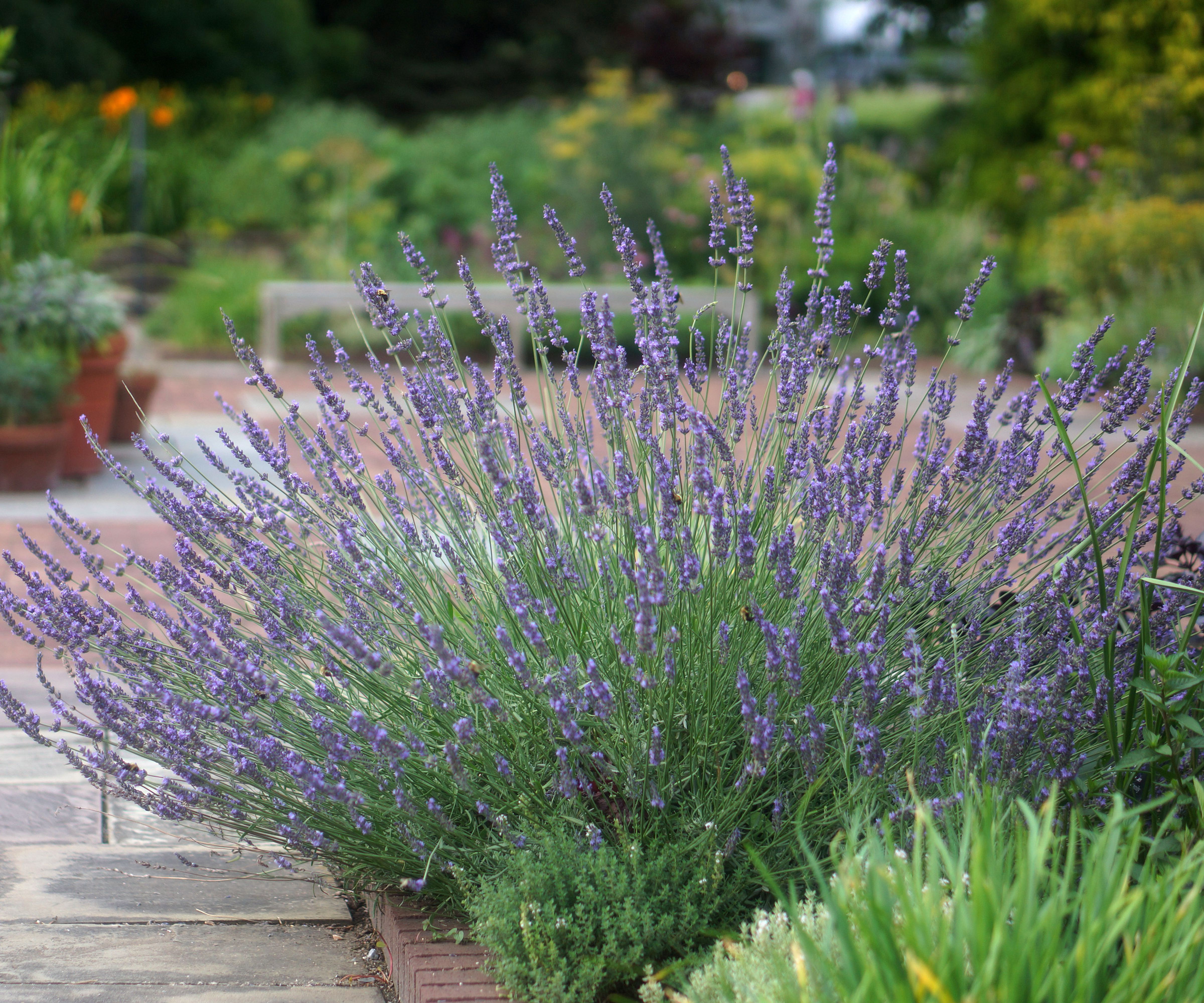
The intense fragrance of lavender flowers is unmistakable, and one which will work hard for you wherever it is planted all summer long.
Knowing how to grow lavender will reward your garden with huge numbers of bees and other pollinators, as well as beautiful flowers, which can of course be harvested and dried.
There are many different varieties of lavender, each with its own characteristics and requirements. Some common types include English lavender (Lavandula angustifolia), available here from Nature Hills; Spanish lavender (Lavandula stoechas), and French lavender (Lavandula dentata). Select a variety that is well-suited to your climate and growing conditions.
USDA zones: 5-9
Flowers: June - September
Plant: In full sun
Prune: Understanding how to prune lavender in the fall or spring will ensure you get a healthy flourish of fresh blooms the following growing season. Don't be afraid to give it quite a hard prune to help maintain the plant's shape and prevent it from becoming woody.
14. Lily of the valley - Convallaria majalis
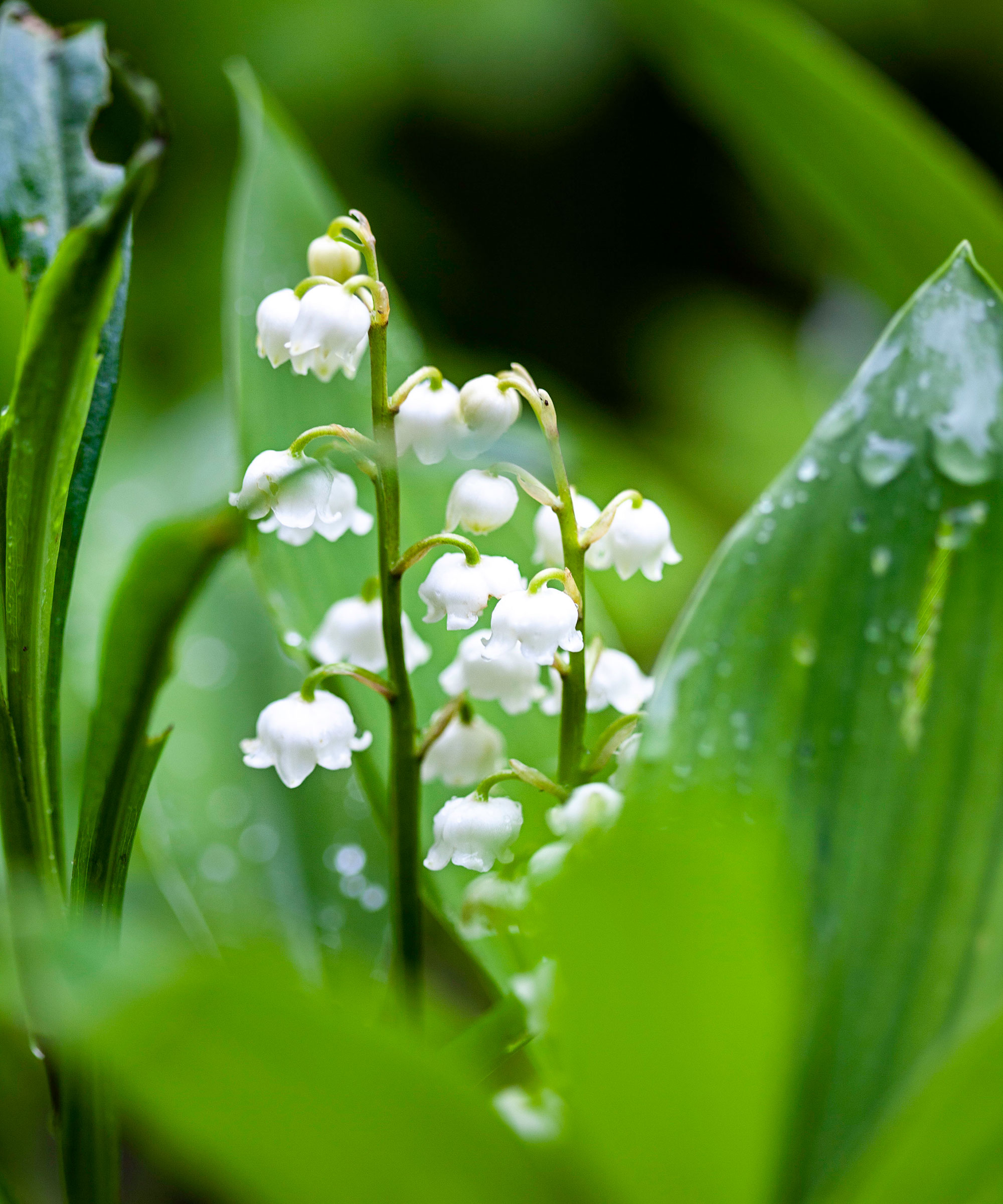
Lily of the valley is a delicate and fragrant perennial plant that produces small, bell-shaped white or pink flowers in spring.
Among the best shade plants, they enjoy full to partial shade, and will grow well at the base of trees or dense hedges.
Over time, lily of the valley can become crowded and may benefit from division to rejuvenate the plants and prevent overcrowding. You can divide the plants every few years in early spring or fall by carefully digging up the rhizomes, dividing them into smaller clumps, and replanting them in fresh soil.
USDA zones: 3-9
Flowers: April - May
Plant: In full or partial shade
Prune: No real pruning is needed. You can leave the foliage to die back into the soil naturally once flowering has finished, or remove when it starts to turn yellow.
FAQs
Which flower has the strongest fragrance?
Many of the plants listed above have some of the strongest fragrances. However, the scent of fragrant flowers can be intensified by heat, humidity, and by being trapped within a confined space, explains Jim from Longwood Gardens.
'We force oriental lilies into bloom in the conservatories during the winter months. When you put a couple of hundred of them in an enclosed space, the scent is strong, unmistakable, and very floral,' he says.
For even more fragrant flower inspiration, you might be interested in learning how to plant a scented border in your backyard.







